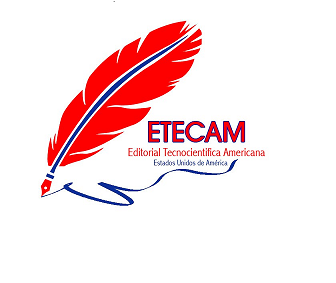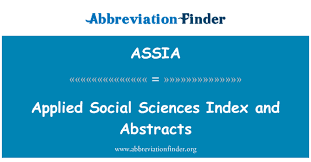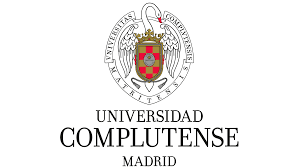Neurodidactic strategies to promote the norms of school coexistence in children of first grade
DOI:
https://doi.org/10.51736/sa.v7i1.192Keywords:
school coexistence, neurodidactic strategies, child development, evaluation, elementary education.Abstract
The need to effectively address school coexistence in students in the first year of elementary school has motivated this study, focused on the design and implementation of a program of neurodidactic strategies. With the purpose of strengthening coexistence norms, the main objective was to explore neurodidactic theories and evaluate their applicability in the school context. The sample included 34 parents and 11 teachers from the Interamerican Bilingual Educational Unit. The methodology included an exhaustive bibliographic review, surveys, participant observation in the classroom and validation by expert criteria. The results, derived from the initial diagnosis, revealed problem areas in school coexistence, highlighting the need for specific interventions. The literature review provided the theoretical basis for the design of neurodidactic strategies adapted to these needs. Validation by expert criteria supported the relevance and quality of the designed program. Parent and teacher surveys reflected divergent perceptions on coexistence and neurodidactic strategies, underscoring the importance of considering the perspectives of both groups. This study, by integrating theoretical contributions with the practical reality of the classroom, presents a comprehensive approach to improve school coexistence and promote the integral development of first grade students.
Downloads
References
Ángel, S., & Perozo, E. F. Á. (2022). Clima organizacional, convivencia escolar y desempeño profesional: triada importante en el contexto educativo ecuatoriano. Revista Honoris Causa, 14(1), 109-128.
Araya-Pizarro, S. C., & Pastén, L. E. (2020). Aportes desde las neurociencias para la comprensión de los procesos de aprendizaje en los contextos educativos. Propositos y Representaciones, 8(1), 1-10.
Asamblea Nacional del Ecuador. (2011). Ley Orgánica de Educación Intercultural. Ley 0. Registro Oficial Suplemento 417 de 31-mar.-2011. Ultima modificación: 19-abr.-2021, 1–124.
Bolaños, D., & Stuart Rivero, A. J. (2019). La familia y su influencia en la convivencia escolar. Revista Universidad y Sociedad, 11(5), 140-146.
Cedeño, G. C. B., & Bailón, J. B. (2021). Estrategias neurodidácticas en el proceso enseñanza-aprendizaje de educación básica. ReHuSo: Revista de Ciencias Humanísticas y Sociales, 6(1), 72-81.
Cerda, G., Pérez, C., Elipe, P., Casas, J. A., & Del Rey, R. (2019). School coexistence and its relationship with academic performance among primary education students. Revista de Psicodidáctica (English ed.), 24(1), 46-52. https://doi.org/10.1016/j.psicoe.2018.06.001
Fierro-Evans, C., & Carbajal-Padilla, P. (2019). Convivencia Escolar: Una revisión del concepto. Psicoperspectivas, 18(1), 9-27. http://dx.doi.org/10.5027/psicoperspectivas-vol18-issue1-fulltext-1486
García, B. F., Sánchez, I. M., González, D. G., & Rodríguez, J. Á. (2022). Role of neurodidactics in teacher professionalization for online teaching in higher education. Texto Livre, 15, 1–12. https://www.scielo.br/j/tl/a/37Pk5v353JMzhMHbFxBFkvB/
Gonzalo Remache-Bunci, M., Rosero Ponce, N. V., & Cóndor Quimbita, B. H. (2023). Estrategias educativas en la solución de conflictos escolares entre adolescentes. Revista Complutense de Educación, 34(3).
Grau, R., Garca-Raga, L., & Lpez-Martn, R. (2016). Towards school transformation. Evaluation of a coexistence program from the voice of students and teachers. Journal of New Approaches in Educational Research (NAER Journal), 5(2), 137-146. http://dx.doi.org/10.7821/naer.2016.7.177
Grau, R., García-Raga, L., & López-Martín, R. (2017). The challenge of coexistence in socially vulnerable schools. Procedia-Social and Behavioral Sciences, 237, 710-716.
Gutiérrez-Méndez, D., & Pérez-Archundia, E. (2015). Estrategias para generar la convivencia escolar. Ra ximhai, 11(1), 63-81.
López, L. M. L. (2023). Neuroeducation, a strategy to strengthen pedagogical and quality processes in science in district schools of locality 9, Bogotá, Colombia. Remittances Review, 8(4).
Muchiut, Á., Zapata, B., Comba, A., Mari, M., Torres, N., Pellizardi, J., & Segovia, A. P. (2018). Neurodidáctica y autorregulación del aprendizaje, un camino de la teoría a la práctica. Revista Iberoamericana de Educación, 78(1), 205–219. https://rieoei.org/RIE/article/view/3193/3996
Ortiz, M. D. P. G., & Domínguez, E. V. (2018). Aportes de las Neurociencias a la Educación. TEPEXI Boletín Científico de la Escuela Superior Tepeji del Río, 5(10). https://doi.org/10.29057/estr.v5i10.3310
Román, F., & Poenitz, V. (2018). La neurociencia aplicada a la educación: aportes, desafíos y oportunidades en América Latina. RELAdEI. Revista Latinoamericana de Educación Infantil, 7(1), 88-93.
Toro, R., Peña-Sarmiento, M., Avendaño-Prieto, B. L., Mejía-Vélez, S., & Bernal-Torres, A. (2022). Análisis empírico del Coeficiente Alfa de Cronbach según opciones de respuesta, muestra y observaciones atípicas. Revista Iberoamericana de Diagnóstico y Evaluación-e Avaliação Psicológica, 2(63), 17.
Vanbelle, S. (2017). Comparing dependent kappa coefficients obtained on multilevel data. Biometrical Journal, 59(5), 1016-1034.
Zambrano, K. C. D., & Campuzano, M. F. P. (2020). Application of contemporary theories of learning in educational process. International Journal of Psychosocial Rehabilitation, 24(10), 2960-2977. https://doi.org/10.37200/V24I10/29816
Published
How to Cite
Issue
Section
License
Copyright (c) 2024 Hipatia Cecilia Quiroz Meneses, María Esilda Bernal Cordero, Edgar Ezequiel Luna Sánchez, Wilber Ortiz Aguilar

This work is licensed under a Creative Commons Attribution-NonCommercial-ShareAlike 3.0 Unported License.






















































